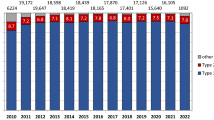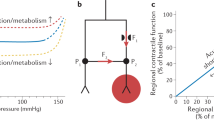Abstract
Over the past decade, the frequency of use of enhanced external counterpulsation (EECP®) has increased in patients with angina, irrespective of medical therapy and coronary revascularization status. Many patients referred for EECP® have one or more comorbidities that could affect this treatment's efficacy, safety, or both. By use of data from more than 8,000 patients enrolled in the International EECP® Patient Registry, we provide practical guidelines for the selection and treatment of patients. We have focused on considerations for patients who have one or more of the following characteristics: age older than 75 years, diabetes, obesity, heart failure, and peripheral vascular disease. We have also reviewed outcomes and treatment recommendations for individuals with poor diastolic augmentation during treatment, for those with atrial fibrillation or pacemakers, and for those receiving anticoagulation therapy. Lastly, we examined relevant data regarding extended courses of EECP®, repeat therapy, or both. While clinical studies have demonstrated the usefulness of EECP® in selected patients, these guidelines permit recommendations for the extended application of this important treatment to subsets of patients excluded from clinical trials.
Key Points
-
An extended course of enhanced external counterpulsation (EECP®) yields a sustained reduction in angina severity and improved quality of life in most patients treated for refractory angina
-
EECP® is safe and effective in elderly patients and those with diabetes, compensated heart failure, atrial fibrillation, and pacemakers if precautions are taken before and during therapy
-
For patients with inadequate angina reduction after 35 h of treatment, an extension of therapy by 10–12 h is associated with further reductions
-
Repeated courses of EECP® for patients with recurrent symptoms are effective
This is a preview of subscription content, access via your institution
Access options
Subscribe to this journal
Receive 12 print issues and online access
$209.00 per year
only $17.42 per issue
Buy this article
- Purchase on Springer Link
- Instant access to full article PDF
Prices may be subject to local taxes which are calculated during checkout

Similar content being viewed by others
References
Thom T et al. (2006) Heart disease and stroke statistics—2006 update: a report from the American Heart Association Statistics Committee and Stroke Statistics Subcommittee. Circulation 113: e85–e151
Arora RR et al. (1999) The multicenter study of enhanced external counterpulsation (MUST-EECP): effect of EECP on exercise-induced myocardial ischemia and anginal episodes. J Am Coll Cardiol 33: 1833–1840
Arora RR et al. (2002) Effects of enhanced external counterpulsation on health-related quality of life continue 12 months after treatment: a substudy of the Multicenter Study of Enhanced External Counterpulsation. J Investig Med 50: 25–32
Michaels AD et al. (2004) Two-year outcomes after enhanced external counterpulsation for stable angina pectoris (from the International EECP Patient Registry [IEPR]). Am J Cardiol 93: 461–464
Barsness G et al. (2001) The international EECP patient registry (IEPR): design, methods, baseline characteristics, and acute results. Clin Cardiol 24: 435–442
Lawson WE et al.; International Enhanced External Counterpulsation Patient Registry Investigators (2006) Two-year outcomes of patients with mild angina treated with enhanced external counterpulsation. Clin Cardiol 29: 69–73
Feldman AM et al. (2005) Enhanced external counterpulsation improves exercise tolerance in patients with chronic heart failure. J Am Coll Cardiol 48: 1198–1205
Wenger NK et al. (online 13 April 2005) Evidence-based management of coronary artery disease in the elderly—current perspectives [http://www.medscape.com/viewarticle/501751] (accessed 13 July 2006)
Kaiser C et al.; TIME Investigators (2004) Risks and benefits of optimised medical and revascularisation therapy in elderly patients with angina—on-treatment analysis of the TIME trial. Eur Heart J 25: 1036–1042
Cheitlin MD et al. (2001) Do existing databases answer clinical questions about geriatric cardiovascular disease and stroke? Am J Geriatr Cardiol 10: 207–223
Peterson ED et al.; American Heart Association Chronic CAD Working Group (2004) Multicenter experience in revascularization of very elderly patients. Am Heart J 148: 486–492
Linnemeier G et al. (2003) Enhanced external counterpulsation in the management of angina in the elderly. Am J Geriatr Cardiol 12: 90–94
Gregg EW et al. (2005) Secular trends in cardiovascular disease risk factors according to body mass index in US adults. JAMA 293: 1868–1874
Flaherty JD and Davidson CJ (2005) Diabetes and coronary revascularization. JAMA 293: 1501–1508
Marwick TH (2006) Diabetic heart disease. Heart 92: 296–300
Linnemeier GC et al.; IEPR Investigators (2003) Enhanced external counterpulsation for the relief of angina in patients with diabetes: safety, efficacy and 1-year clinical outcomes. Am Heart J 146: 453–458
Michaels AD et al. (2001) Does higher diastolic augmentation predict clinical benefit from enhanced external counterpulsation (EECP)? Data from the International Enhanced External Counterpulsation Patient Registry. Clin Cardiol 24: 453–458
McCullough PA et al. (2006) Impact of body mass index on outcomes of enhanced external counterpulsation therapy. Am Heart J 151: 139.e9–139.e13
Lawson WE et al. (2001) Benefit and safety of enhanced external counterpulsation in treating coronary artery disease patients with a history of congestive heart failure. Cardiology 96: 78–84
Soran O (2004) A new treatment modality in heart failure: enhanced external counterpulsation (EECP). Cardiol Rev 12: 15–20
Soran O et al. (2002) Enhanced external counterpulsation (EECP) in patients with heart failure: a multi-center feasibility study. Congest Heart Fail 8: 204–208
Soran O et al. (2002) Enhanced external counterpulsation as treatment for chronic angina in patients with left ventricular dysfunction: a report from the International EECP Patient Registry (IEPR). Congest Heart Fail 8: 297–302
Hirsch AT et al. (2006) ACC/AHA 2005 Practice guidelines for the management of patients with peripheral arterial disease (lower extremity, renal, mesenteric, and abdominal aortic): a collaborative report from the American Association for Vascular Surgery/Society for Vascular Surgery, Society for Cardiovascular Angiography and Interventions, Society for Vascular Medicine and Biology, Society of Interventional Radiology, and the ACC/AHA Task Force on Practice Guidelines (Writing Committee to Develop Guidelines for the Management of Patients With Peripheral Arterial Disease): endorsed by the American Association of Cardiovascular and Pulmonary Rehabilitation; National Heart, Lung, and Blood Institute; Society for Vascular Nursing; TransAtlantic Inter-Society Consensus; and Vascular Disease Foundation. Circulation 113: e463–e654
Suresh K et al. (1998) Maximizing the hemodynamic benefit of enhanced external counterpulsation. Clin Cardiol 21: 649–653
Michaels AD et al.; International EECP Patient Registry Investigators (2005) Frequency and efficacy of repeat enhanced external counterpulsation for stable angina pectoris (from the International EECP Patient Registry). Am J Cardiol 95: 394–39755
Acknowledgements
The International EECP® Patient Registry is sponsored by Vasomedical, Inc., Westbury, NY.
Author information
Authors and Affiliations
Corresponding author
Ethics declarations
Competing interests
The other authors declared they have no competing interests.
Supplementary information
Rights and permissions
About this article
Cite this article
Michaels, A., McCullough, P., Soran, O. et al. Primer: practical approach to the selection of patients for and application of EECP. Nat Rev Cardiol 3, 623–632 (2006). https://doi.org/10.1038/ncpcardio0691
Received:
Accepted:
Issue Date:
DOI: https://doi.org/10.1038/ncpcardio0691
This article is cited by
-
Treatment of refractory angina in patients not suitable for revascularization
Nature Reviews Cardiology (2014)
-
Effect of enhanced external counterpulsation treatment on renal function in cardiac patients
BMC Nephrology (2013)



